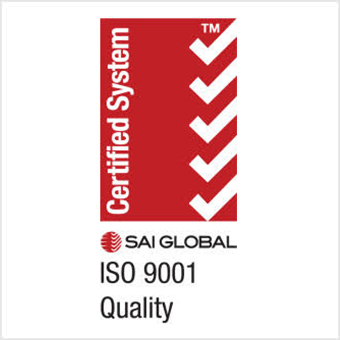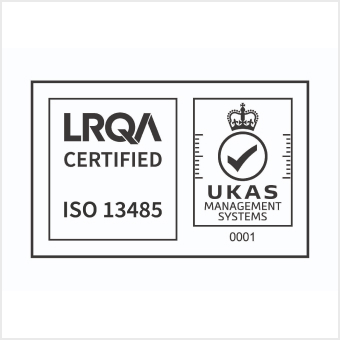Accelerated Aging Tests
Part 1: Introduction to Accelerated Aging Testing
- What is Accelerated Aging?
- Definition and explanation of accelerated aging
- The need for accelerated aging tests in product development, quality control, and research
- Comparison between real-time aging and accelerated aging tests
- The role of accelerated aging in predicting long-term performance and reliability
- Importance of Accelerated Aging Testing
- Economic and time-saving benefits over real-time aging
- Predicting the service life of materials and products
- Ensuring compliance with safety and regulatory standards
- The role of aging tests in optimizing materials and improving product designs
- Key Principles of Accelerated Aging
- Acceleration factors (temperature, humidity, UV radiation, oxygen exposure)
- The Arrhenius equation and its application in aging models
- Environmental simulation and the reproduction of real-world conditions
- Understanding the relationship between accelerated conditions and real-life degradation
Part 2: The Science Behind Accelerated Aging
- Physical and Chemical Mechanisms of Aging
- Oxidation and degradation of materials over time
- Thermal aging: Effects of heat on polymers, metals, and other materials
- UV degradation and its impact on polymers, coatings, and textiles
- Moisture, humidity, and environmental effects on material properties
- Material-Specific Aging Mechanisms
- Aging of polymers and plastics (e.g., thermoplastics, thermosets, elastomers)
- Aging in metals and alloys (corrosion, fatigue, and wear)
- Aging in composite materials (delamination, matrix degradation)
- Aging in coatings and paints (color change, cracking, adhesion loss)
Part 3: Testing Methodologies in Accelerated Aging
- Temperature and Humidity Cycling Tests
- Simulating real-world temperature and humidity variations
- Common testing methods (e.g., ASTM D573, ASTM D2000)
- Effect of cycling on materials: Thermal expansion, contraction, and mechanical property degradation
- UV Exposure and Xenon Arc Testing
- UV degradation testing for polymers and coatings
- ASTM G155: Standard practice for operating Xenon Arc Light Apparatus
- Simulating sunlight exposure: Light sources, wavelength ranges, and exposure durations
- UV-induced failures: Discoloration, embrittlement, and loss of mechanical strength
- Ozone and Environmental Stress Cracking Tests
- ASTM D1171: Ozone resistance testing
- Environmental stress cracking (ESC) and its impact on plastics and elastomers
- Accelerated ozone exposure chambers and protocols
- The role of antioxidants and stabilizers in improving ozone resistance
- Chemical Exposure and Solvent Resistance Testing
- Simulating chemical exposure and solvent interactions in aging tests
- Test protocols for resistance to oils, fuels, and other chemicals (e.g., ASTM D543)
- The role of chemical resistance in automotive, aerospace, and industrial applications
- Testing for degradation mechanisms: Swelling, cracking, and softening
- Mechanical Property Degradation Tests
- Tensile strength, elongation, hardness, and impact testing post-aging
- Methods for evaluating mechanical performance after exposure to aging conditions
- The role of dynamic mechanical analysis (DMA) in aging tests
- Evaluating fatigue resistance and the effect of cyclic loading on material aging
Part 4: Accelerated Aging Tests for Specific Materials
- Polymers and Plastics Aging Tests
- ASTM D573: Heat aging of rubber and elastomers
- ISO 188: Accelerated aging of rubber
- Aging of thermoplastics, including polyolefins, PVC, and polycarbonates
- Performance testing: Tensile, hardness, and chemical resistance
- Elastomers and Rubber Aging Tests
- Aging of rubber materials: Effect of heat, ozone, and UV exposure
- Rubber aging tests for automotive and industrial components
- ASTM D471: Rubber testing for solvent and oil resistance
- Performance degradation of rubber gaskets, seals, and hoses over time
- Metals and Alloys Aging Tests
- Thermal aging and accelerated corrosion testing for metals
- ASTM G85: Salt spray testing for corrosion resistance
- Aging of alloys used in aerospace and automotive applications
- Methods for predicting the service life of metal components
- Composites Aging Tests
- Aging of composite materials: Delamination, matrix degradation, and fiber degradation
- Environmental exposure testing for fiber-reinforced plastics (FRP)
- Testing for aerospace and automotive composite components
- ASTM D522: Testing the impact of UV exposure on composite materials
Part 5: Standards and Regulations in Accelerated Aging Testing
- Industry Standards for Accelerated Aging
- Key ASTM standards: ASTM D573, ASTM D2000, ASTM G155, ASTM D471, and others
- International standards: ISO 188, ISO 1817, and ISO 2039
- Regulatory bodies and their role in developing accelerated aging test protocols
- Standardized testing for automotive, aerospace, and construction materials
- Compliance with Regulatory Requirements
- The importance of aging tests in ensuring product safety and longevity
- Environmental regulations and their influence on aging tests (e.g., REACH, RoHS)
- Meeting product standards for durability in extreme conditions (e.g., automotive and aerospace)
- The relationship between accelerated aging tests and product certification (UL, CE, FDA)
Part 6: Applications and Case Studies of Accelerated Aging Tests
- Automotive Industry
- Accelerated aging tests for rubber components: Seals, gaskets, hoses, tires
- Durability testing for automotive plastics: Dashboard, lighting, and exterior parts
- Aging tests for coatings and paints used in automotive exteriors
- Real-world examples of aging failures and lessons learned from accelerated aging tests
- Aerospace and Aviation
- Importance of accelerated aging in materials used in aircraft: Composites, metals, rubber seals
- Testing for extreme temperatures, UV radiation, and atmospheric pressure conditions
- Case studies of material degradation in aerospace components due to aging
- NASA and other aerospace organizations’ use of accelerated aging tests for certification
- Construction and Building Materials
- Accelerated aging of roofing materials, insulation, and adhesives
- Testing the weathering resistance of building materials (plastics, metals, and composites)
- Accelerated aging of paints and coatings for long-term durability
- Case studies in construction: Weathering failures and material longevity
- Medical Devices and Healthcare
- Accelerated aging of elastomers, plastics, and composites used in medical devices
- Testing the durability of implants, gaskets, tubing, and prosthetics under accelerated conditions
- Aging of materials used in drug delivery systems and surgical instruments
- Regulatory requirements and certification for medical device materials
- Consumer Goods and Electronics
- Accelerated aging of plastics and rubber in consumer electronics
- Testing for long-term performance of mobile phone casings, connectors, and keypads
- The role of aging tests in improving the durability of home appliances and packaging
- Case studies: Consumer electronics failures related to material aging
Part 7: Challenges and Future Directions in Accelerated Aging Testing
- Challenges in Accelerated Aging Testing
- Limitations of accelerated aging in predicting real-world performance
- Inconsistencies in aging mechanisms under different test conditions
- Balancing the need for speed in testing with the accuracy of results
- The difficulty of simulating multi-environmental conditions in one test
- Innovations in Aging Test Technologies
- Advances in testing equipment: Environmental chambers, UV light simulators, and climate-controlled chambers
- Use of sensors, AI, and data analytics in aging tests
- Smart materials and self-healing polymers: The future of accelerated aging tests
- Sustainability and Environmental Considerations
- The role of sustainability in aging tests: Reducing the environmental footprint of testing methods
- Biodegradable materials and their accelerated aging tests
- The move towards more environmentally friendly and resource-efficient testing practices
- The Future of Accelerated Aging Tests
- Innovations in material science and how they affect aging test protocols
- Increased emphasis on lifespan prediction and reliability testing
- The growing need for predictive modeling and simulations in aging tests
- Industry trends toward more realistic and adaptive testing standards
Conclusion
- Summary of Key Points
- Recap of the importance and benefits of accelerated aging tests
- Review of different aging test methodologies and their applications across industries
- The significance of aging tests in ensuring the longevity, safety, and performance of materials
- Final Thoughts on the Future of Accelerated Aging Testing
- The evolving landscape of aging tests with advances in technology and materials
- The continuing role of accelerated aging tests in product development, quality control, and regulatory compliance



